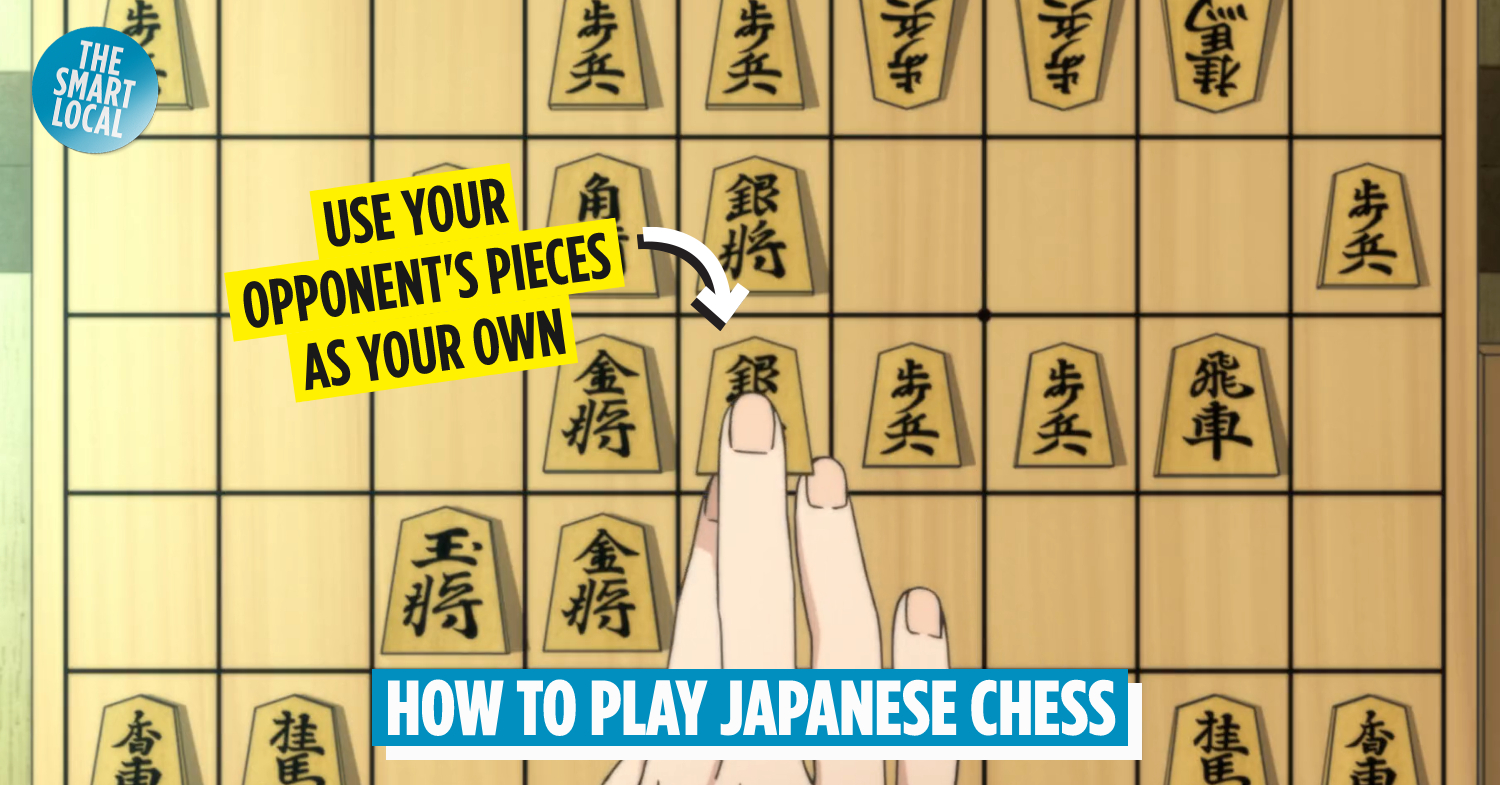Learn how to play shogi
Japanese chess, also known as shogi, is a centuries-old strategy game that continues to be a popular pastime and cultural asset to Japanese society. If you would like to venture into the fascinating world of Japanese chess, we’ve prepared a simple guide on how to play shogi.
Be sure to bookmark this article for easy reference so that you can revise your shogi fundamentals while you play.
1. Understand the objectives of shogi
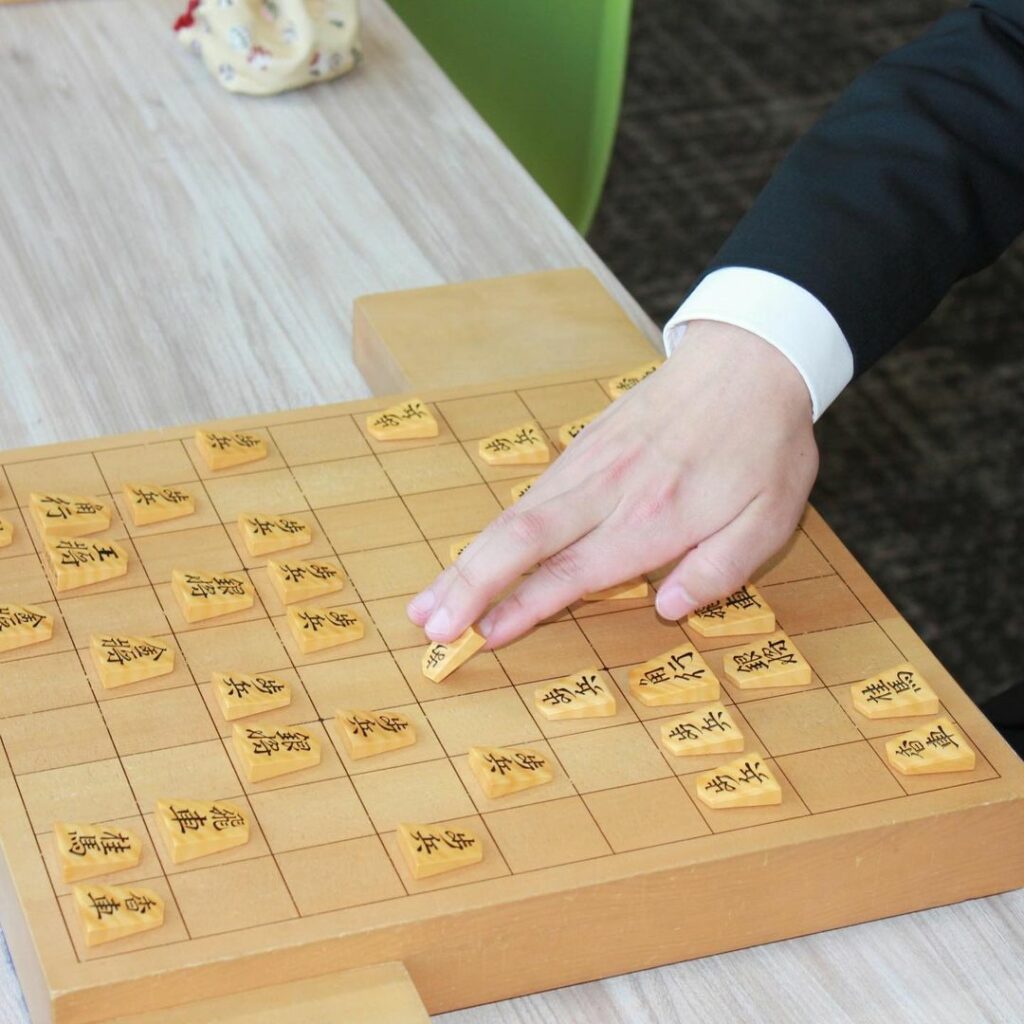
Image credit: @kurumaru_ebi
Shogi is a game where two players try to outwit each other by moving pieces strategically in order to capture the opponent’s king.
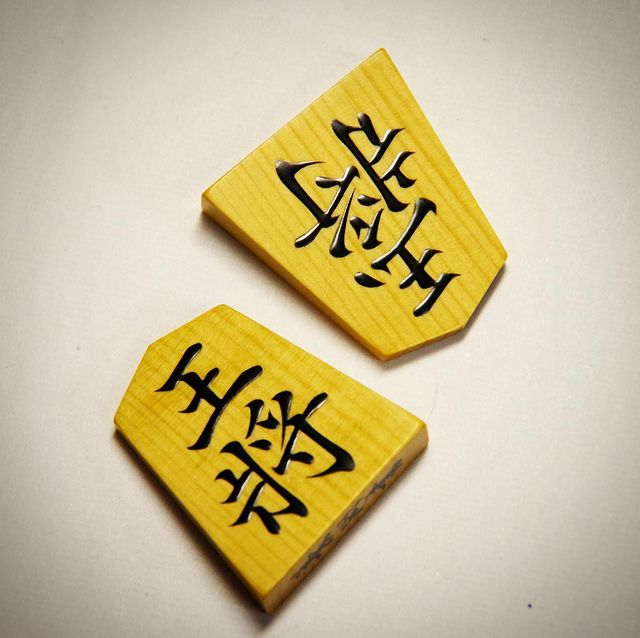
The shogi pieces that represent the King
Image credit: @tousui_sakurai
To do so, you must force the opponent’s king into a checkmate, which means that there are no eligible moves left for the king to escape from being captured. You’ll then say “詰み” (tsumi; checkmate), and the game will end with your victory.
If the king can be captured in the next turn if it does not move, it is called a “check”. A check does not have to be verbally announced in the game. However, if you choose to do so, you can say “王手” (oute).
The game can also end in other ways. If the identical chess positions occur for four turns in a row, the game ends in a draw.
If a never-ending check arises for four turns in a row, in which the same chess pieces’ positions are repeated, the player checking the opponent loses the game.
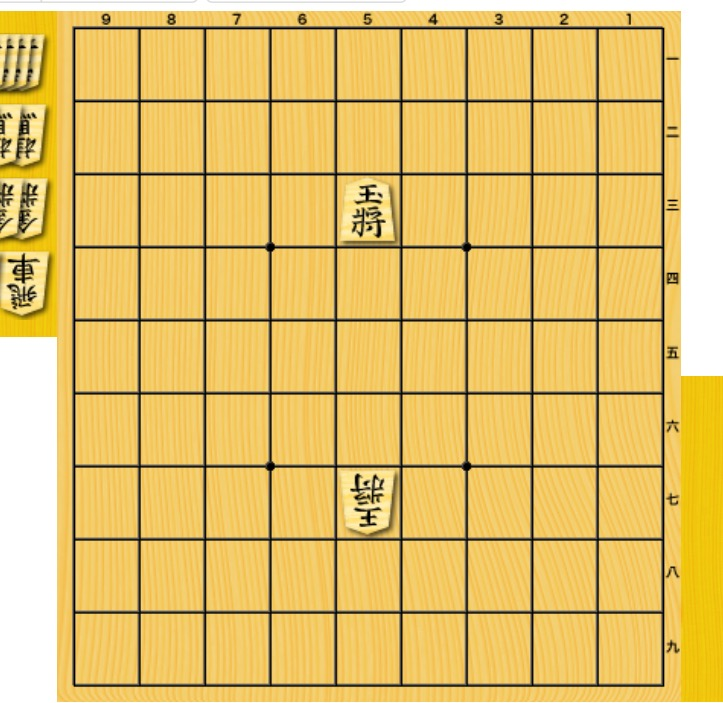
Image credit: 勝ち将棋ブログ
Stalemate – when a player runs out of legal moves, resulting in an immediate draw – almost impossible in shogi as captured pieces can be dropped back into the game.
Instead, the game may reach an impasse (持将棋; jishougi). This happens when both players’ kings have reached the other player’s promotion zone, and neither player can either gain any more chess pieces from the other party.
In this case, the two players can settle for a point system. Bishop and Rook are valued at five points each, and the others are one point each.
After counting the total points from current and captured pieces, the player with less than 24 points loses. If neither player falls below 24 points, the game ends in a draw.
2. Know the chess layout
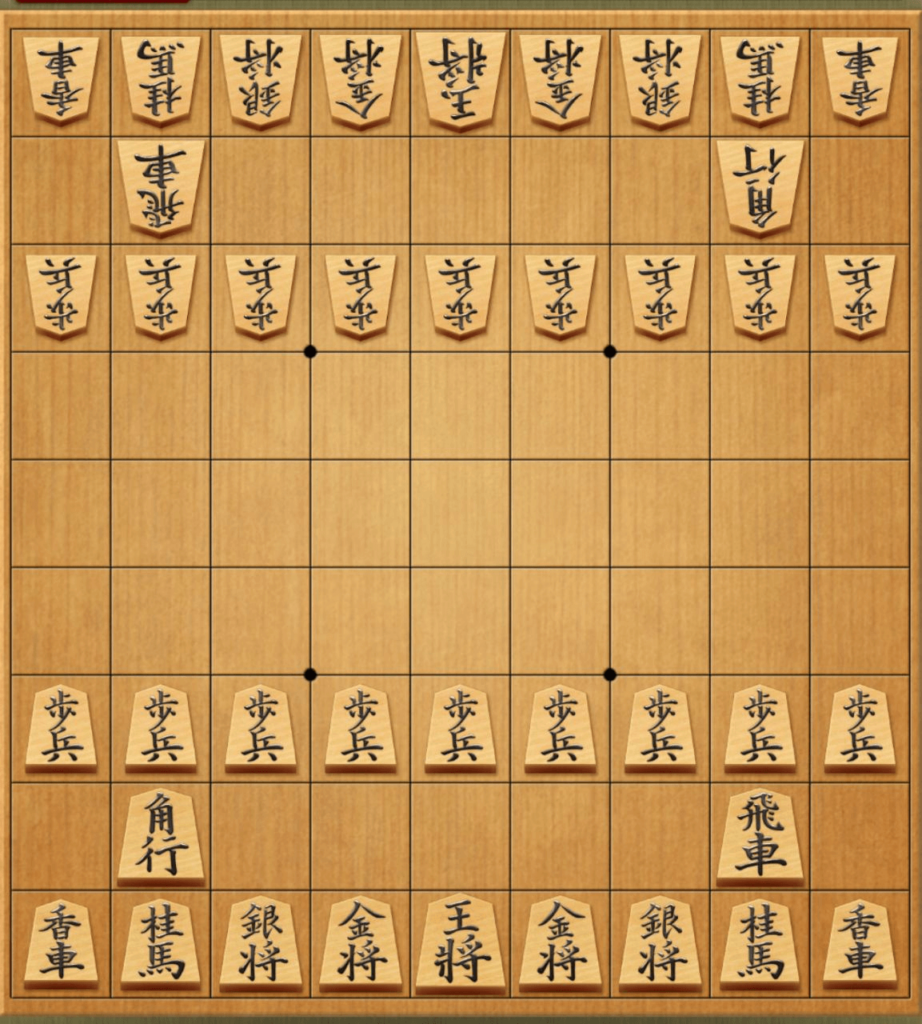
Image adapted from: Cross Field Inc.
Most shogi games are played on a 9 x 9 chess board. Each player begins with 20 pentagonal pieces, and the pieces should point towards the opponent.
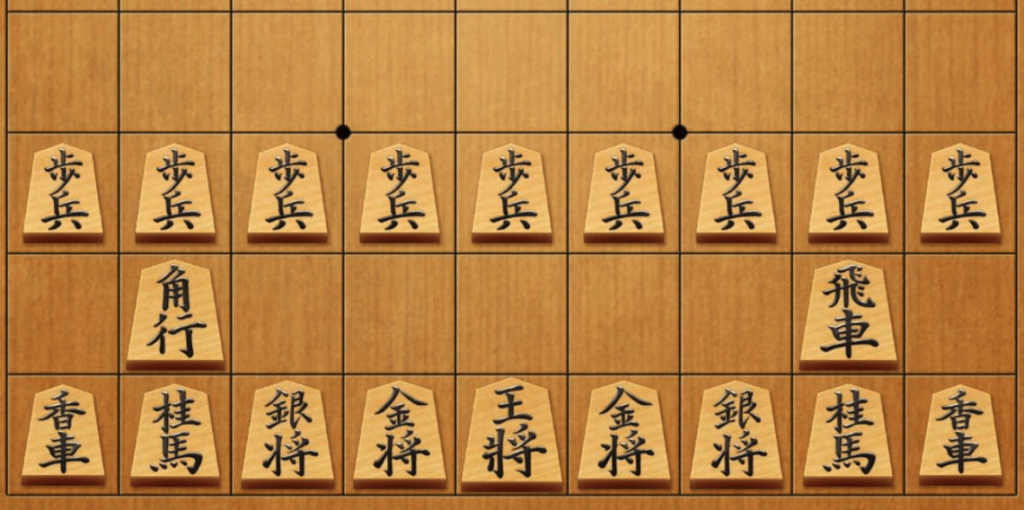
Placement of shogi pieces
Image adapted from: Cross Field Inc.
The pieces are laid out in the following order:
- For the row closest to you, place Lance, Knight, Silver General, Gold General, King, Gold General, Silver General, Knight, and Lance in order, from left to right.
- For the row second closest to you, place Bishop and Rook on the second left and right-most tiles respectively.
- For the third row, lay out nine pawns across the row.
3. Know the pieces and their movements
Next, you’ll need to learn how to recognise the pieces and how they move.
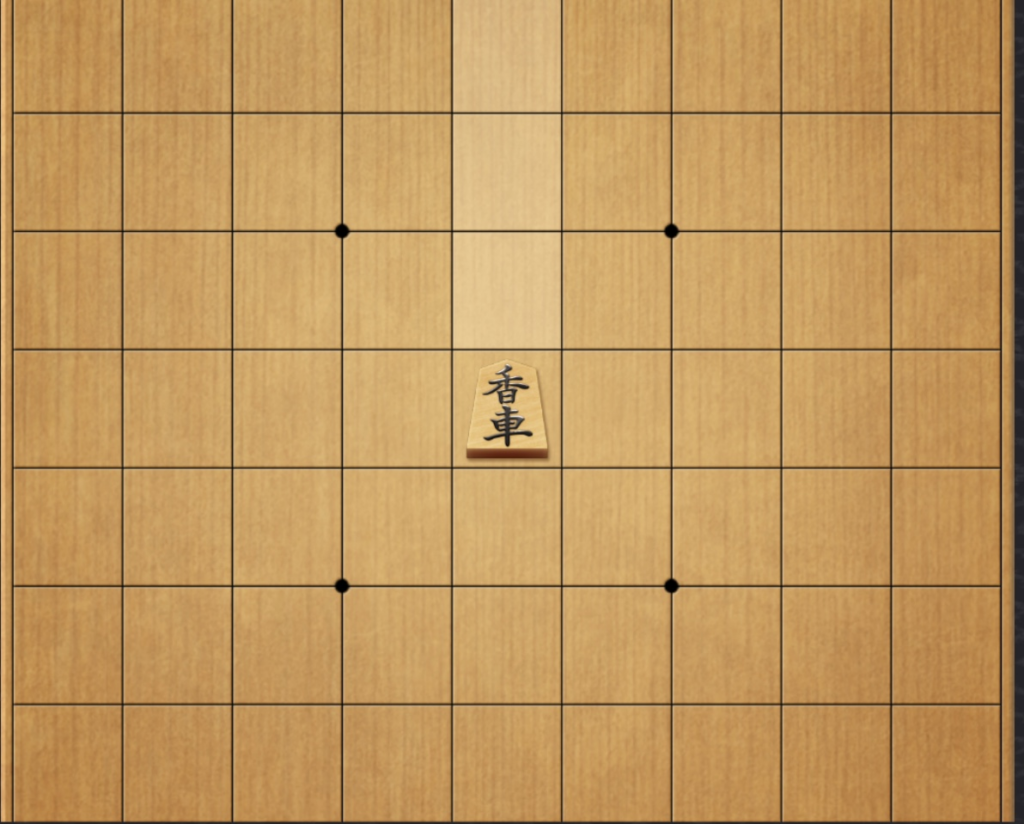
Lance piece
Image adapted from: Cross Field Inc.
The first piece you’ll learn is Lance. On the chess piece, the kanji is written as “香車” (kyosha; incense chariot). Lance can only move forward.
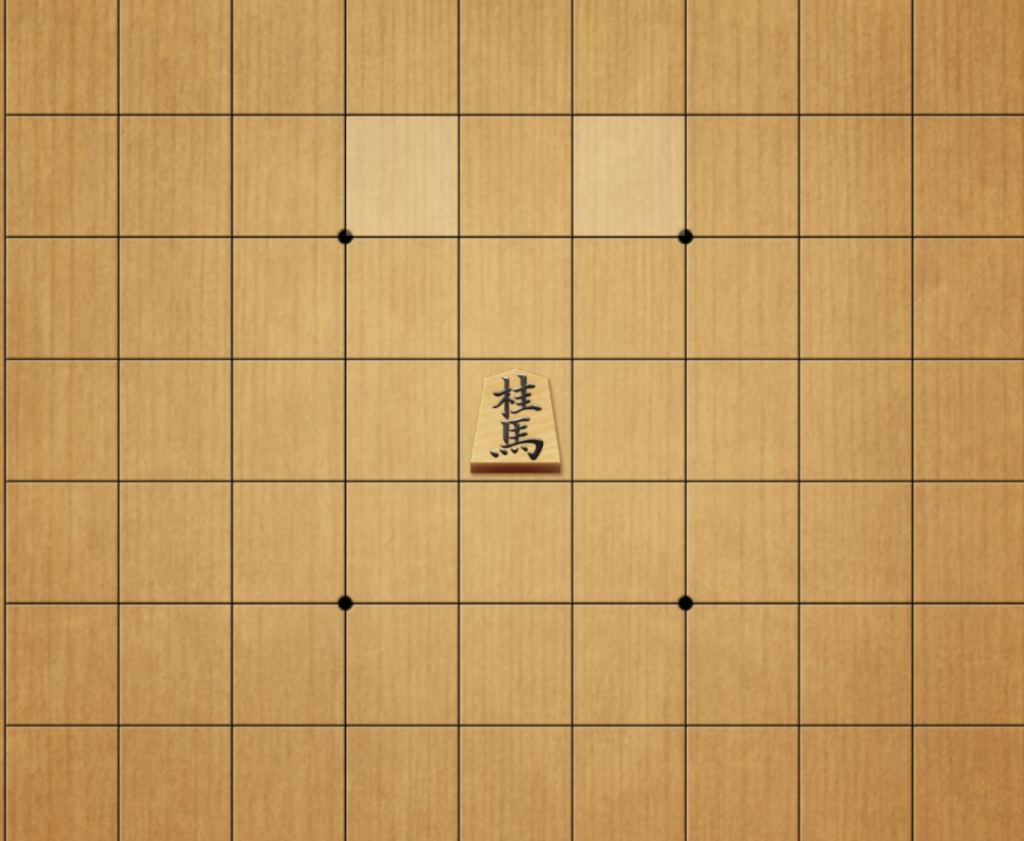
Image credit: Cross Field Inc.
The next piece is Knight. Denoted by the words “桂馬” (keima; cassia horse) on the piece, it moves either two squares north then one square east, or two squares north then one square west. It is also the only tile that can jump over other pieces.
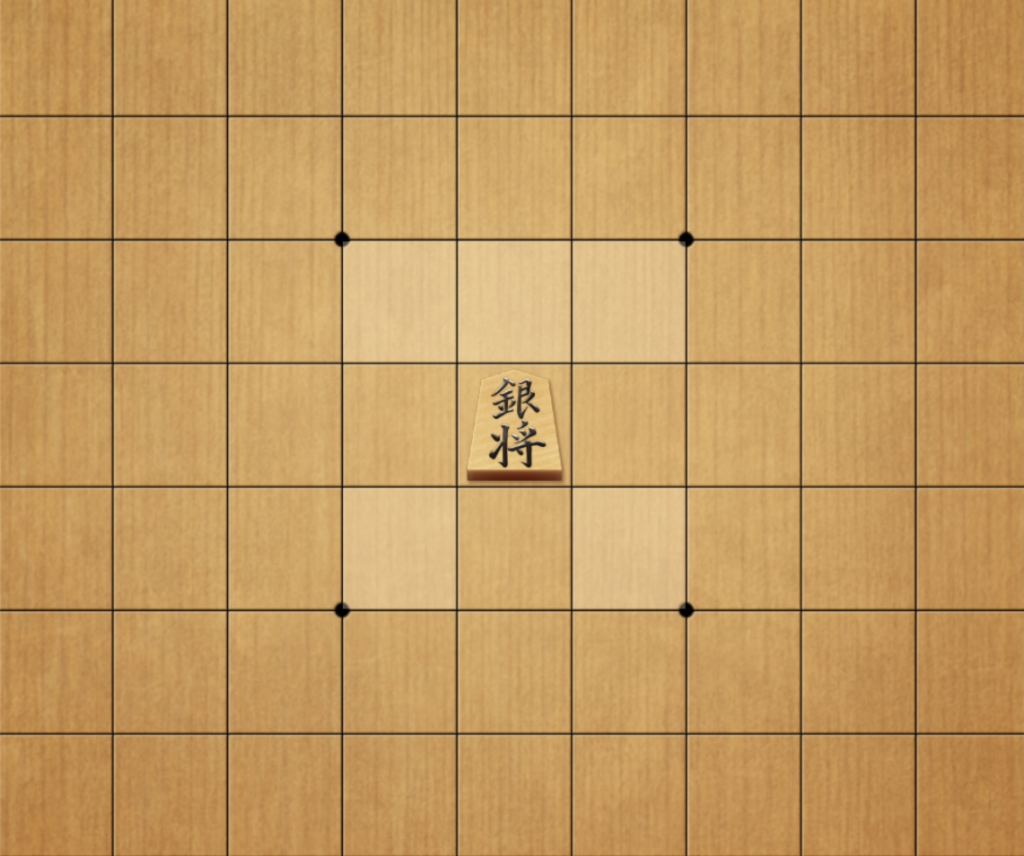
Image adapted from: Cross Field Inc.
Following which, we have the Silver General. It is written as “銀将” (ginshou), and it can move either one tile in any diagonal direction or one tile forward.
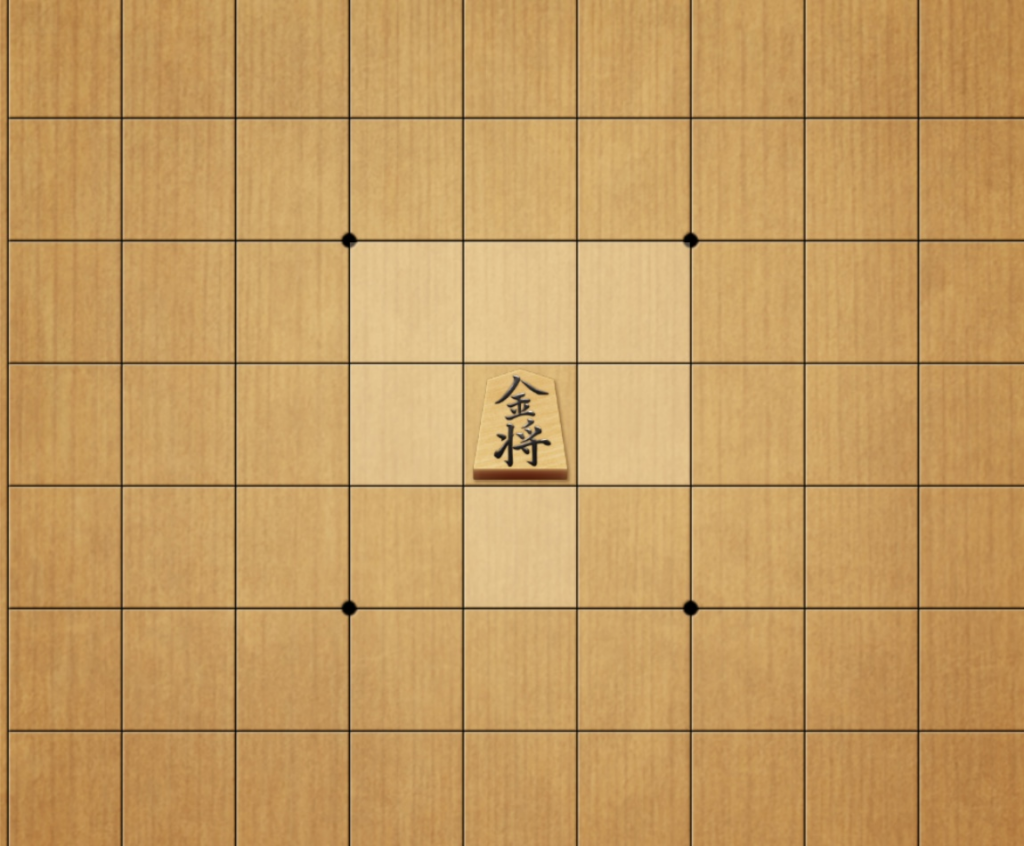
Image adapted from: Cross Field Inc.
Then, we have the Gold General, which is written as “金将” (kinshou). It can move one tile in any direction, except diagonally backwards.
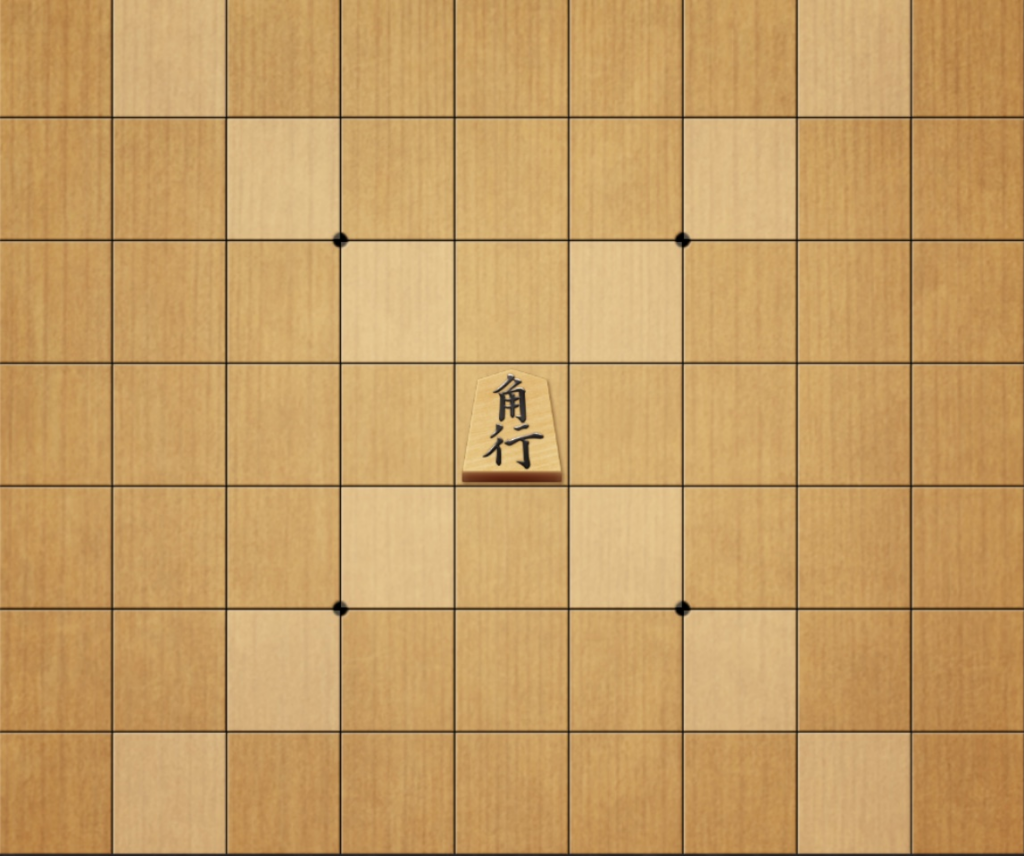
Image adapted from: Cross Field Inc.
The Bishop, written as “角行” (kakugyou; diagonal mover), can move in any diagonal direction.
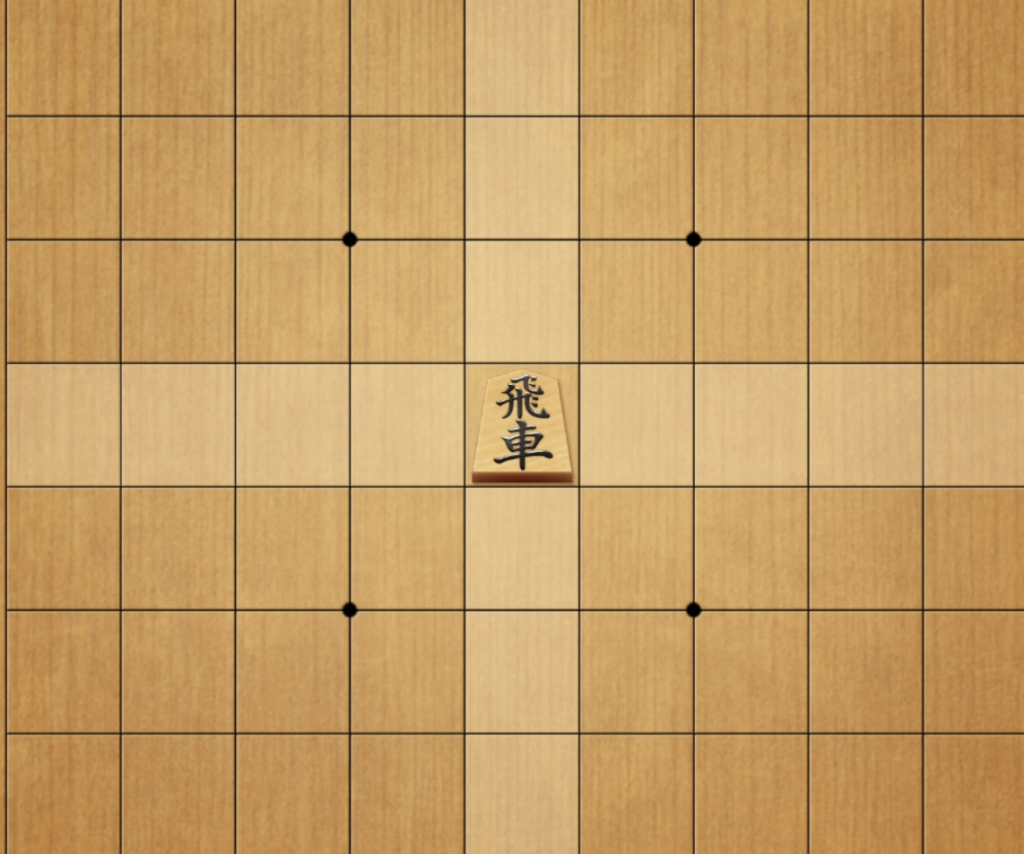
Image adapted from: Cross Field Inc.
The Rook, denoted by the kanji “飛車” (hisha; flying chariot), can move forward, backwards, left, and right freely.
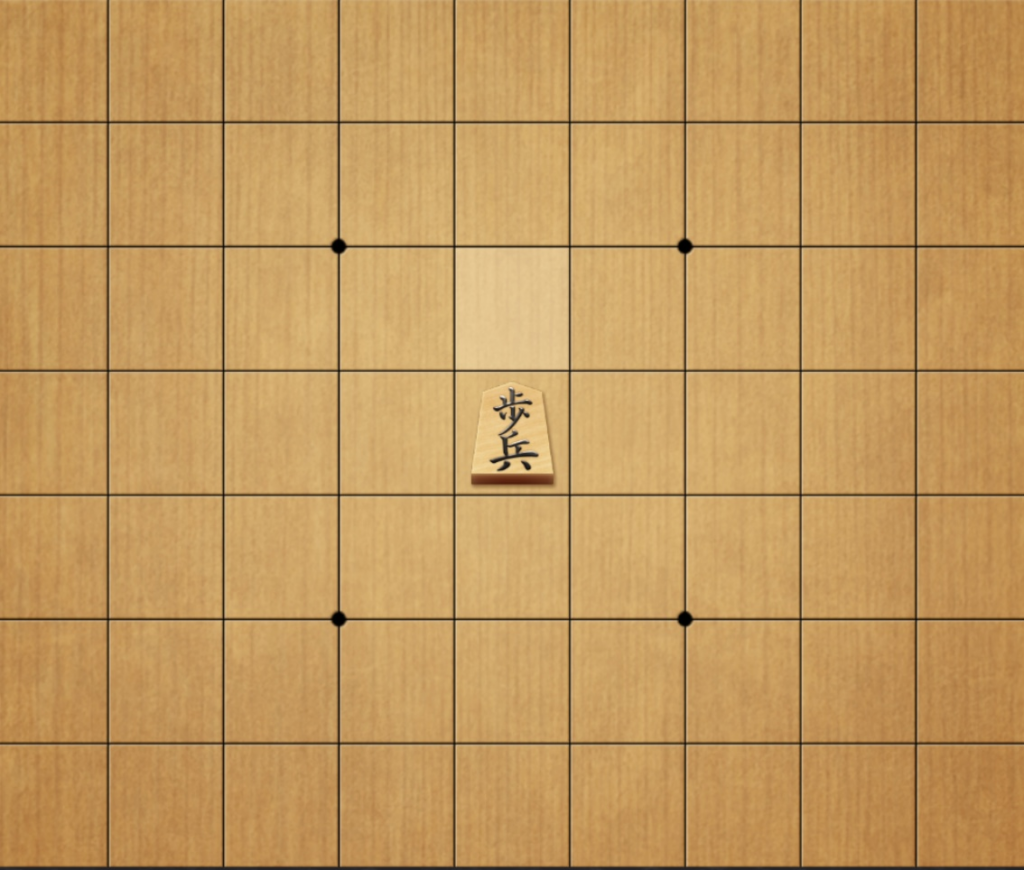
Image adapted from: Cross Field Inc.
The Pawn, or “歩兵” (fuhyou; foot soldier), can advance one tile forward every turn.
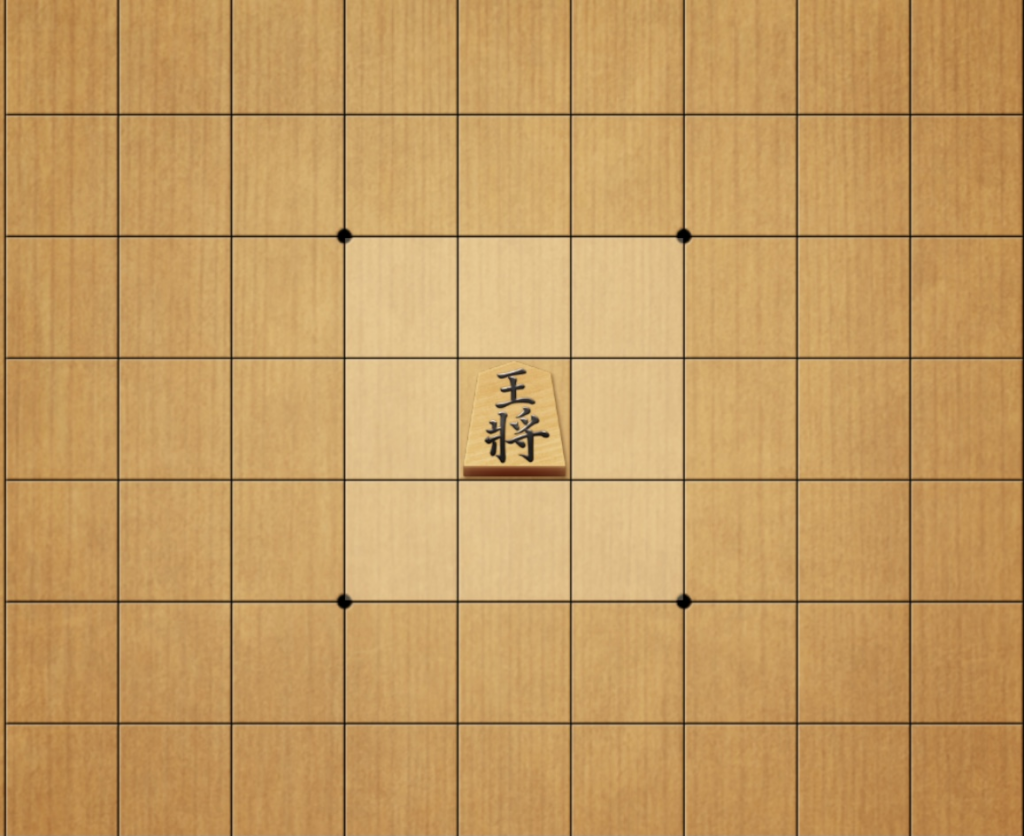
Image adapted from: Cross Field Inc.
Finally, as the most important piece in the game, the King can move one tile in any direction. An interesting detail to note is that the King is the only chess piece with differentiating kanji to distinguish it from your opponent’s king.
It is written as “王将” (oushou; king general) or “玉将” (gyokushou; jeweled king) – the difference lies in the additional dot on the bottom right of the kanji for the jeweled King.
4. Understand the promotion zone and promoted pieces
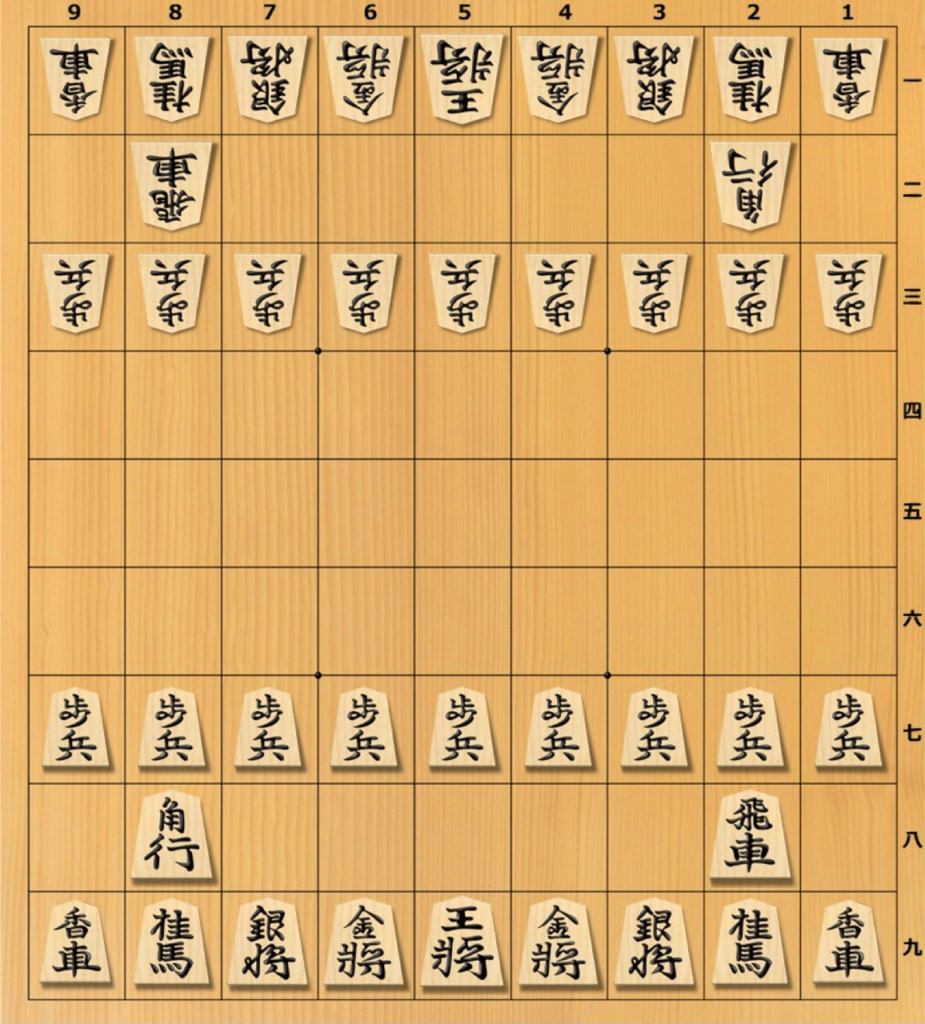
Image adapted from: ken1
When your pieces move into the the rows nearest to your opponents, you have the option to promote your pieces. In a physical game of shogi, the pieces are flipped over to the side with red words when they are promoted.
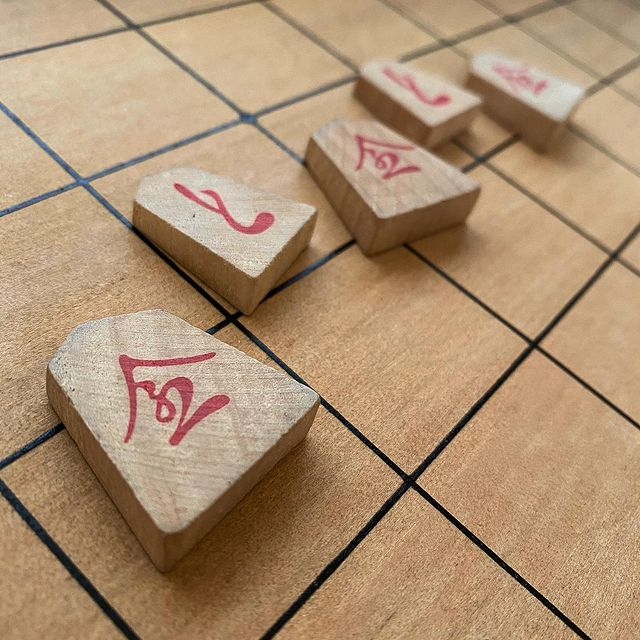
Image credit: @_nemurenai_
Promotion is always done at the end of a move. In other words, your piece has to move based on its original range first. You’re only allowed to promote the shogi piece at the end of the turn.
When the pieces are promoted, their range of eligible moves changes.
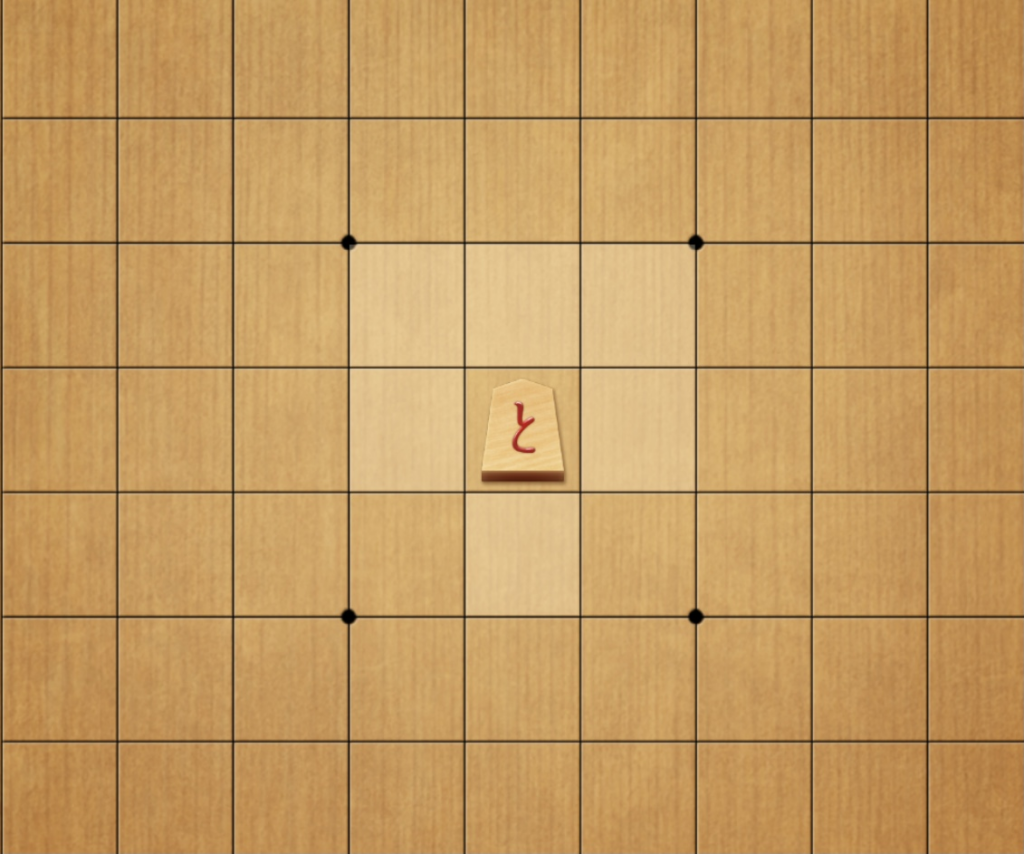
Range of a Promoted Pawn
Image adapted from: Cross Field Inc.
For the Promoted Lance (成香; narikyou), Knight (成桂; narikei), Silver General (成銀; narigin), and Pawn (と金; tokin), the eligible moves becomes those of a Gold General. In other words, these pieces can move one tile in any direction, except diagonally backwards.
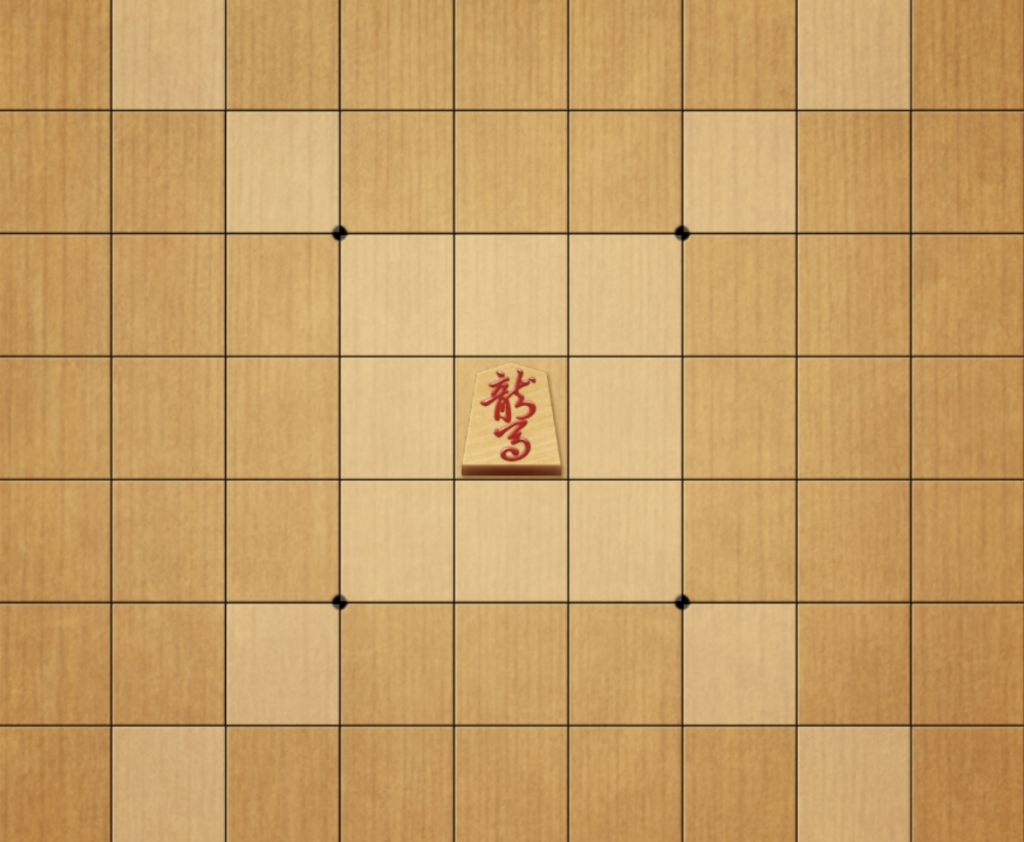
Image adapted from: Cross Field Inc.
Meanwhile, a Promoted Bishop (龍馬; ryuuma) gains the ability to one tile in any direction, on top of its current range.

Image adapted from: Cross Field Inc.
The Promoted Rook (龍王; ryouou) gains the ability to move one tile in any direction, on top of its current range.
The King and Gold General cannot be promoted.
Note: You must promote your Pawn or Lance when it reaches the end of the chess board on your opponent’s side. The same goes for the Knight in the last two rows.
5. Capturing and dropping a piece
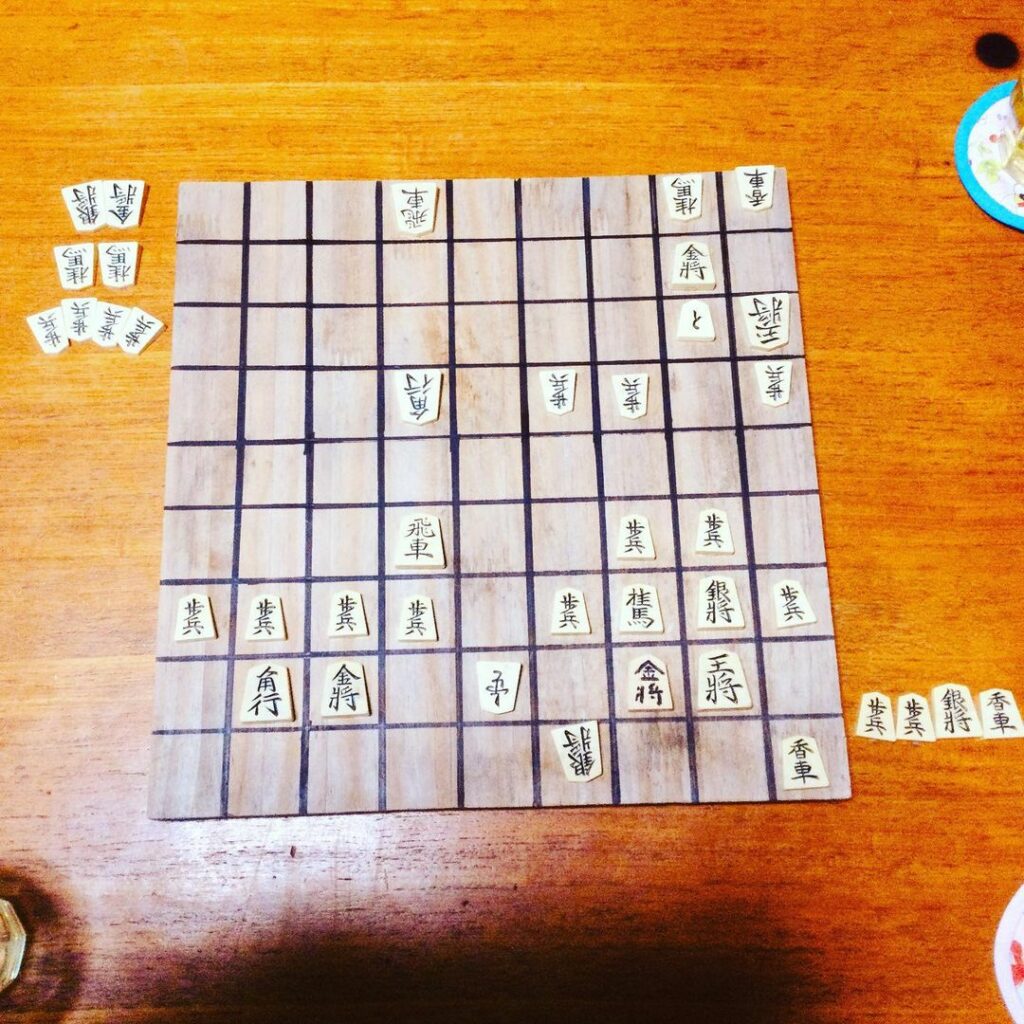
Image credit: @schunchee
When you capture your opponent’s shogi piece, your own piece takes the position of the captured piece. From this point on, the gameplay begins to starkly differ from traditional English chess.
In shogi, you’re able to use captured opponent pieces as your own. As such, when you capture an opponent’s piece, you’ll retrieve your opponents’ piece and place it beside the game board on your side, with the unpromoted side facing upwards. Later in the game, you’re allowed to drop the opponent pieces into an empty tile on the gameboard as your own piece.
You can only drop 1 piece every turn, and each shogi piece is dropped unpromoted. It can only be promoted on the next move.
There are several rules regarding dropping pieces:
- You can only drop one piece every turn, and each shogi piece is dropped unpromoted. It can only be promoted on the next move.
- A drop is eligible only if there are further moves the piece can make on the next turn. This means that Pawns and Lances cannot be dropped on the last row on your opponent’s side. Meanwhile, Knights cannot be dropped on the final two rows on your opponent’s side.
- You cannot drop a Pawn for an immediate checkmate. However, you can check or checkmate the opponent’s king by dropping other pieces, or use the Pawn to check.
- Pawns cannot be dropped in a column where there are other unpromoted Pawns of your own.
6. Castle building
One of the most important things to do in the beginning is castle building. In shogi, the original position of the king is highly perilous. There’s even a proverb that goes, “Avoid a sitting king”. As such, it is common to move the king into a good defense position early on by building “castles” to protect the king.
There are many “castles” to choose from, and the list is ever expanding as current shogi professionals continue to invent innovative ways to protect the king.
One of the most common “castle” to construct is the Yagura Castle. The king is surrounded by pawns, generals, knights, and the rook in the following manner:
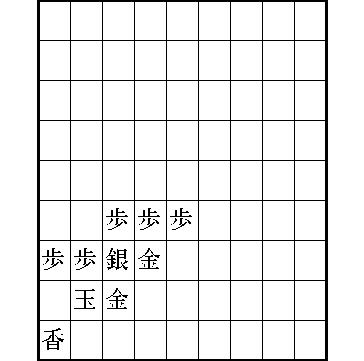
Layout of a Yagura Castle
Image adapted from: Shogi Pages
7. Common shogi tactics
As the game proceeds, there are several common techniques you can keep in mind to gain an advantage. Here are some you can keep in mind.
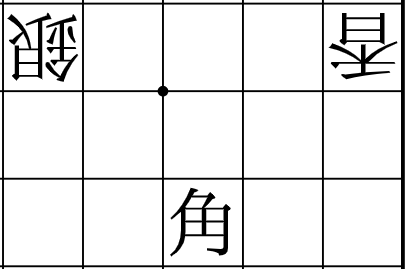
Your Bishop is threatening both your opponent’s Silver General and Lance, forcing them to sacrifice a piece.
Image adapted from: Shogi Playground
Fork: Drop or move a piece strategically so that two of your opponent’s pieces are threatened at once. This forces your opponent to sacrifice a chess piece.
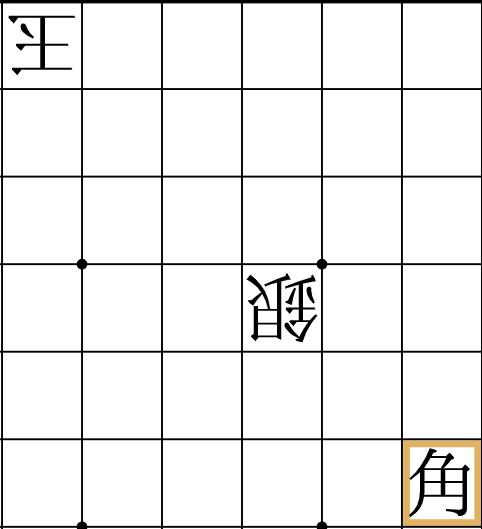
Your Bishop is threatening the Silver General, but it cannot move away as there will be a checkmate.
Image adapted from: Shogi Playground
Pin: You’ve pinned your opponent so that they cannot move the threatened piece away as there’s an even more important piece behind the threatened piece. This forces your opponent to sacrifice a piece in order to protect another.
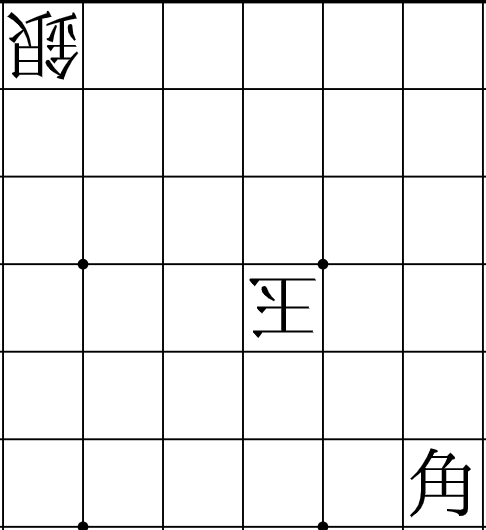
Your Bishop is threatening the King, thus your opponent must move it away, but that also entails sacrificing the Silver General.
Image adapted from: Shogi Playground
Skewer: Like a pin, a skewer occurs when the opponent is forced to sacrifice a piece in order to protect another piece along the same row, column, or diagonal. The difference is that the more valuable piece is under direct attack, unlike in a pin.
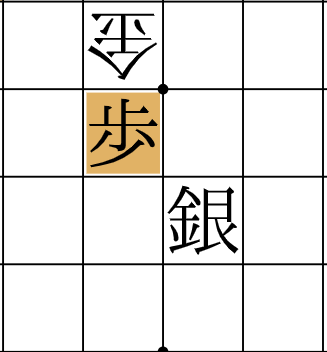
A Pawn is stopped directly in front of your opponent’s Gold General – if it goes in to take the Pawn, you can capture the Gold General with your Silver General.
Image adapted from: Shogi Playground
A striking pawn: Drop a pawn directly in front of your opponent’s piece to force your opponent to move away and break up their defense. You can also lure your opponent into capturing the pawn before unleashing a sneak attack.
8. How to improve your shogi skills
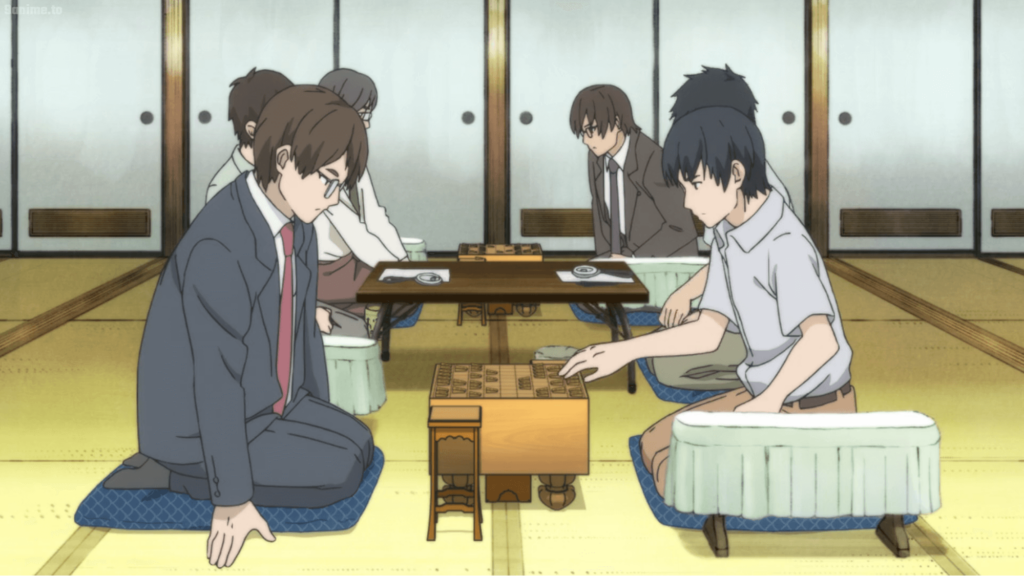
Image credit: Studio Shaft
The best way to learn and improve in shogi is to practice. Join a shogi club as that’s the best way to advance along the learning curve.
However, as new players, you may be adverse to testing out your amateur skills against actual shogi players. Fret not: there are many ways to enhance your shogi skills alone.
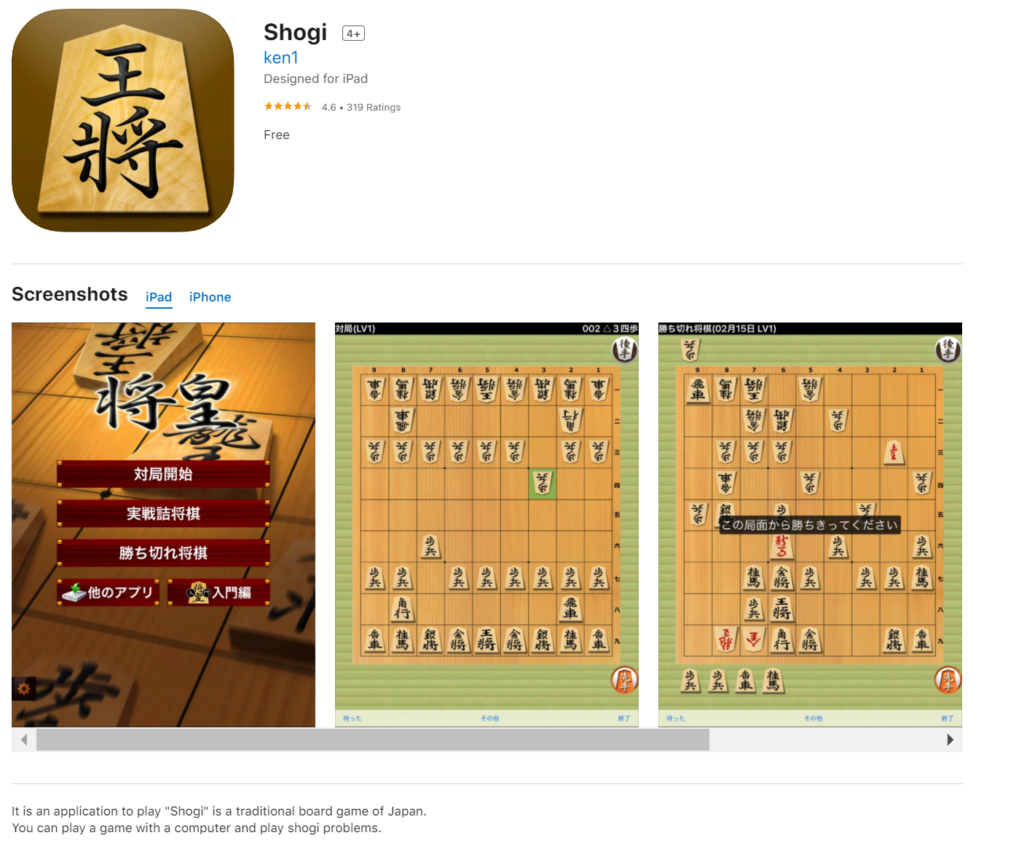
Image adapted from: App Store
The easiest way to familiarise yourself with shogi is to download shogi apps on your mobile phone. These shogi apps allow you to train with AI, play against opponents online, and view tutorials on different shogi openings and playstyles. For iOS users, click here to download. For Android users, click here.
Video credit: HIDETCHI
Watching shogi tutorials on YouTube is another good way to learn as it will expose you to a variety of game techniques. A channel we recommend is HIDETECHI, where you can find a series of different shogi openings, basic pawn tactics, and analyses of famous shogi games.
Understand how to play shogi
Now that you’ve learnt more about how to play shogi, be sure to keep practicing and you’ll be able to showcase your mental prowess on the chessboard in no time.
For more articles, check out:
- Weird Japanese mascots
- Taihoan Tea House, an affordable tea house with authentic Uji tea
- Video games set in Japan
- Super Nintendo World guide
- Awashima Shrine with over 20,000 creepy dolls
Cover image adapted from: Studio Shaft
